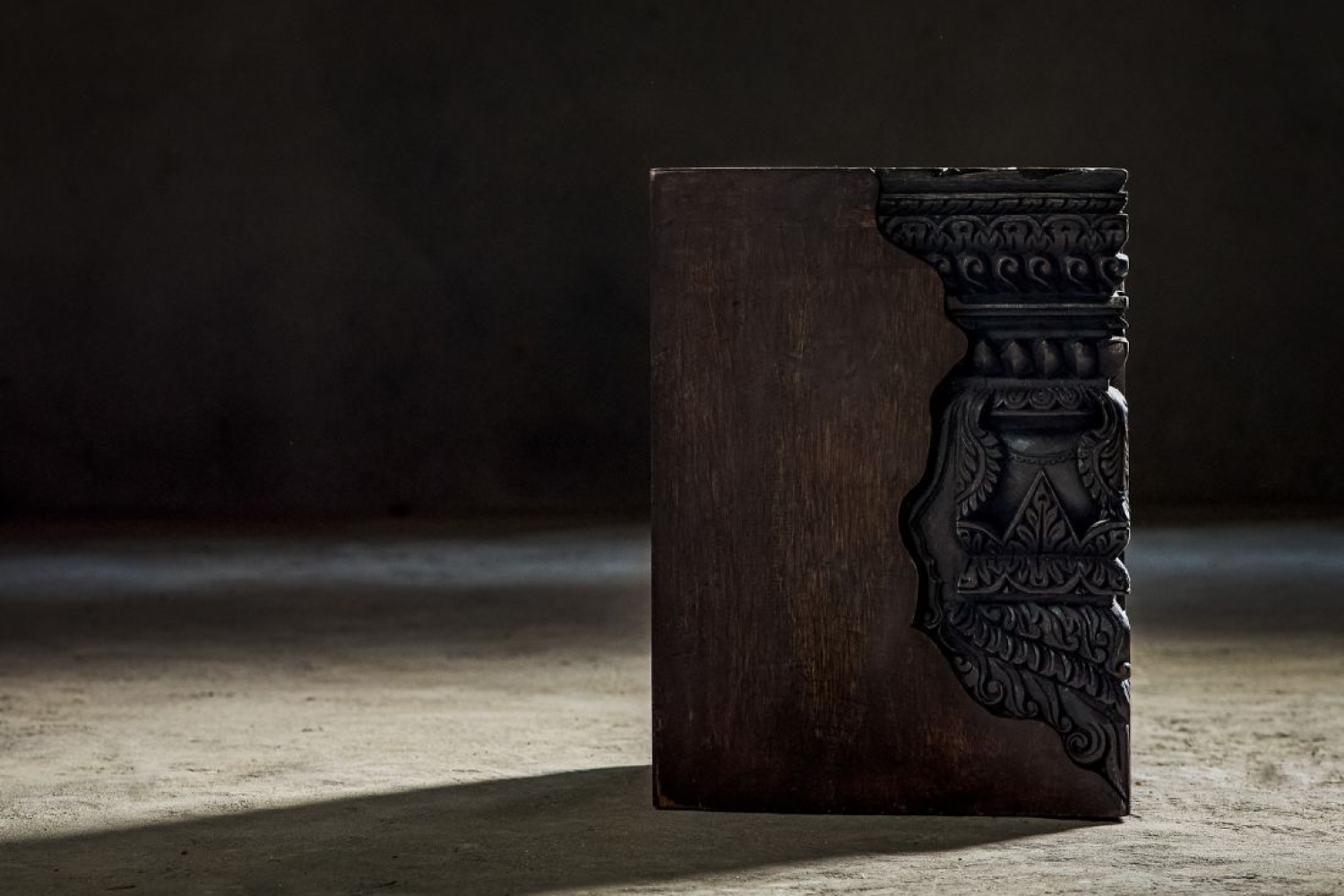

Mana Collective is a design studio founded by two passionate creatives—Harshitaa Agrawal, an interior architect, and Aditi Kedia, a product designer—both of whom grew up in Kathmandu, Nepal. United by a deep appreciation for the rich local crafts of their homeland, they came together during the COVID-19 pandemic with a shared vision: toreimagine traditional Nepali craftsmanship for modern interiors while preserving its cultural essence.
The duo’s work celebrates the intricate artistry of Nepal’s woodworking, weaving, and carving traditions, bridging the gap between the past and the present. By combining age-old techniques with contemporary design sensibilities, Mana Collective offers timeless pieces that evoke a sense of calm and meditation, drawing from the spiritual and historical roots of Nepali culture. They tell us more about their venture below:
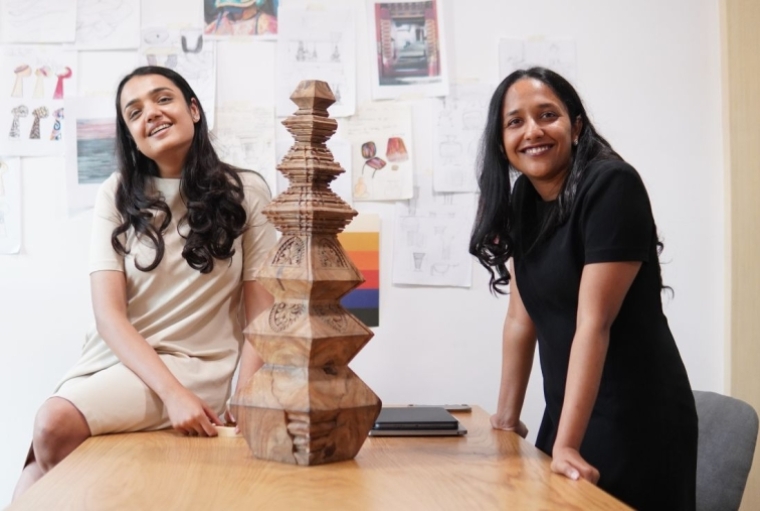
ADAPTING TRADITIONAL NEPALI CRAFTS
Aditi Kedia: I think it started off as a COVID project. Both of us found ourselves back in Nepal. We were both very passionate about the local crafts in the region, so we felt that we should do something about it—rethinking the way things are done currently.
Harshitaa Agrawal: We grew up seeing all of these crafts. Even today, as designers, we visit old areas, historic places, and see craftsmen at work. You appreciate it, and it’s fascinating. When people come, they admire these crafts but it doesn’t really translate. And that’s why we saw a gap— these are such beautiful pieces, but they are diminishing. The new generation appreciates them, but they’re not taking them on board. The market for them has shrunk. So we thought, why don’t we come together to create objects that move this craft forward, while keeping the traditional values intact and making them relevant for today?
AK: We wanted to keep the traditional values intact while making them something that could evolve with time. The real issue was that these crafts hadn’t moved forward with time—they hadn’t adapted to modern interiors. People didn’t know how to style them within their homes, which is why they were diminishing, not because the craft wasn’t relevant or that people didn’t want to incorporate them into their spaces.
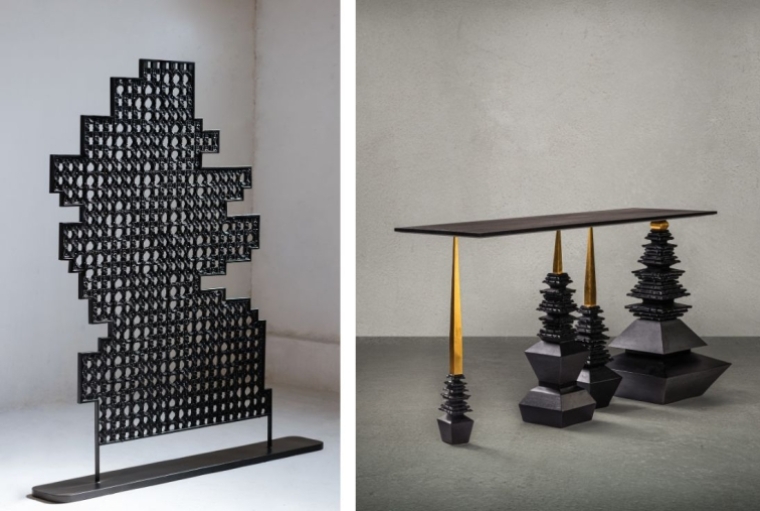
ON DHYAN COLLECTION
HA: Our intro collection is called Dhyan. The Dhyan collection is the meditation of making. Basically, it celebrates the intricacy of creating these crafts and woodworking. To make anything by hand, be it weaving a carpet or creating thangka, you need to be in a very meditative state. When something is done by hand, there’s room for error, but to achieve the perfection that the craftsmen here do, they must be in a very sound state of mind. The whole collection came together to celebrate this meditation of making.
AK: When we started, we did a lot of research. We looked at all the crafts in the region and tried to understand what made them unique. For example, with Thangka, we realized that everything is done with a single, very fine brush. Even the wood carving in the region is finer than other wood carvings around Asia. All the crafts here represent Buddhism and Hinduism, so we got cues from both the locals and the craftsmen. People see these crafts as a translation of their religious aspect, and within both Buddhism and Hinduism, there’s a lot of emphasis on meditation. Craftsmen see their work as devotion. For instance, when making a piece of woodworking for a square, they view it as an offering. That’s where the concept of Dhyan came about. We wanted to incorporate this idea while moving away from the religious aspects, rethinking it within modern sensibilities, but still maintaining that focus.
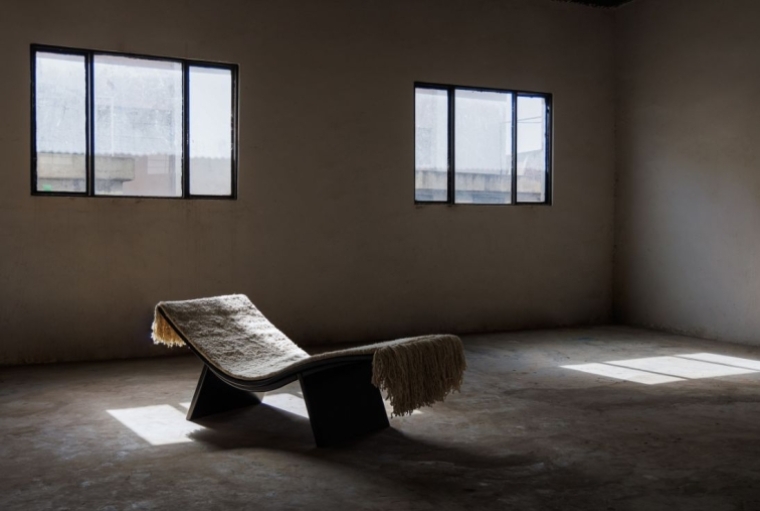
USING BLACK MOTIFS
HA: Kathmandu actually means Kashtamanda, which means the city of wood. All the craft here is done in wood and stained black. We wanted to maintain that tradition because the whole story revolves around Kathmandu. It’s about promoting what we’ve grown up seeing, promoting the local craftsmen, and showing how they work. So, black and gold became the two stark colors we used. The wood- work around here is usually stained black, so we kept that to stay connected with tradition.
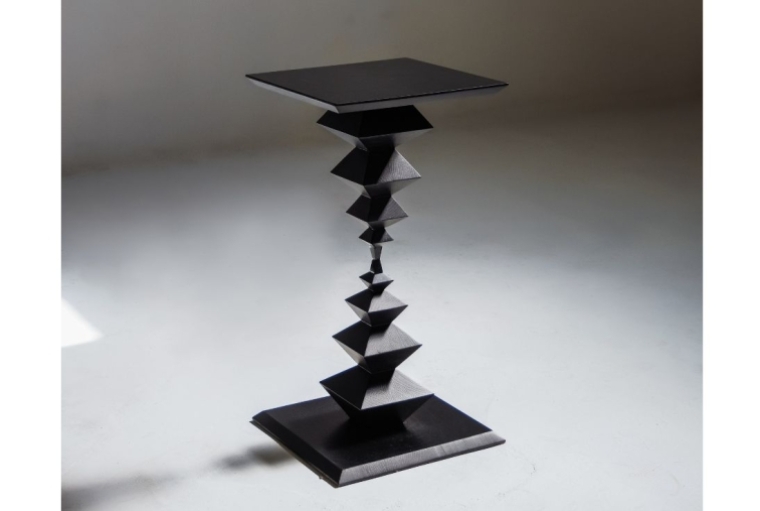
TELLING STORIES THROUGH DESIGN
HA: I believe all our pieces are meant to evoke a sense of peace and calm, but they also tell a story. Once you place them in your space, they aren’t just objects—they becomeconversation starters. People wonder, ‘Why is this like this? Where does it come from?’ And I think that’s what we want to create—conversations around the design, aroundwhere it’s from, and how it fits into modern spaces. For example, one of our side tables is called Sadhana, which means to focus. The design of the table has a focal point, so when you look at it, your eyes go straight to that point. Understanding the name and concept behind it helps to connect the dots.
Words Paridhi Badgotri
Date 27.03.2025